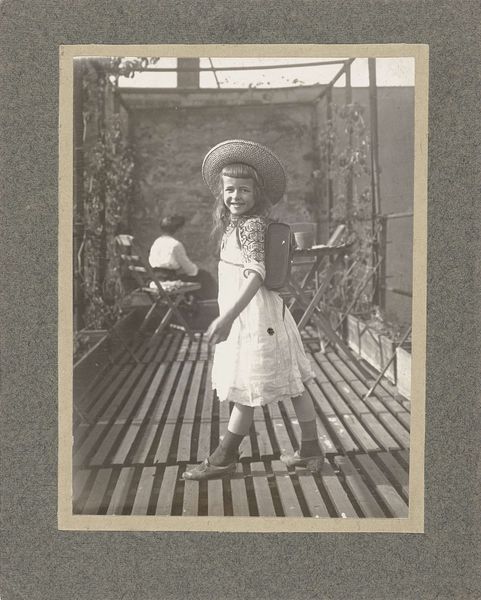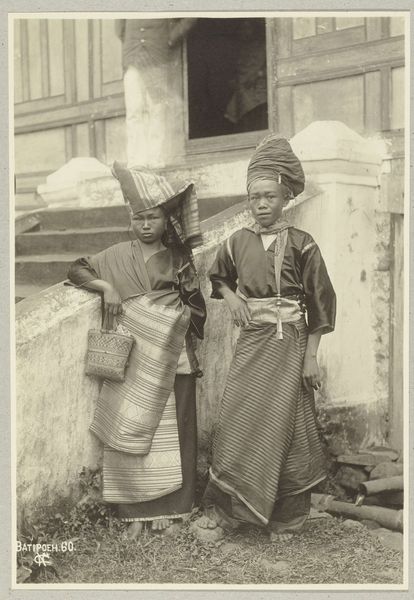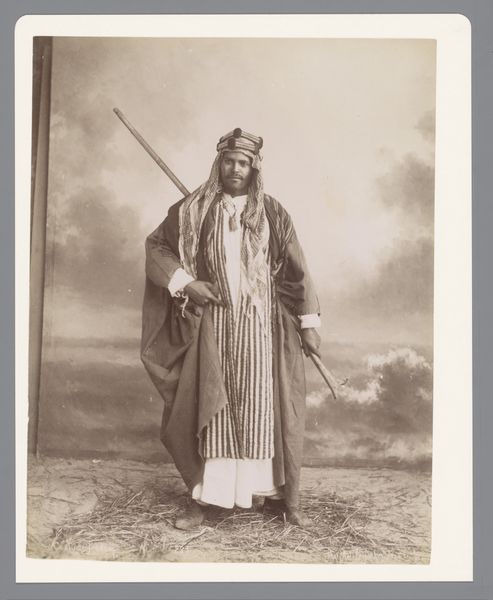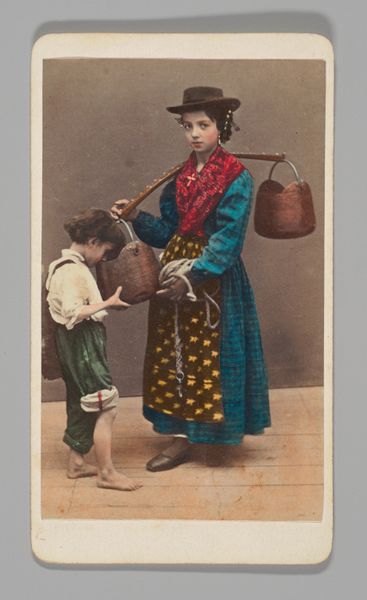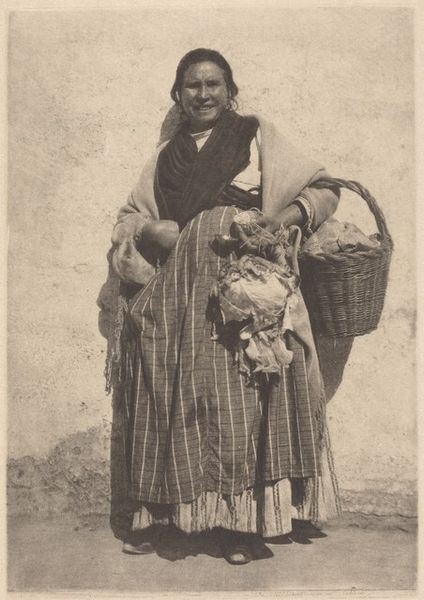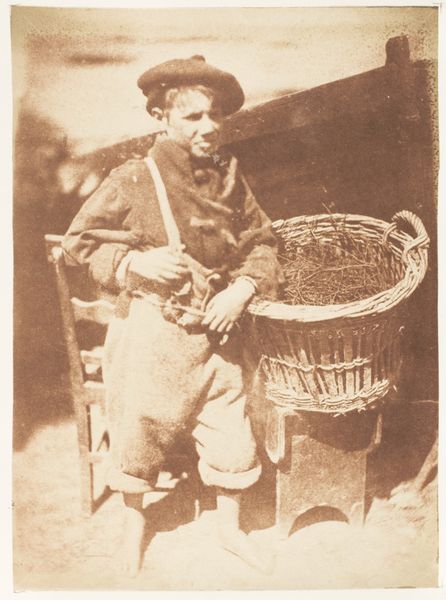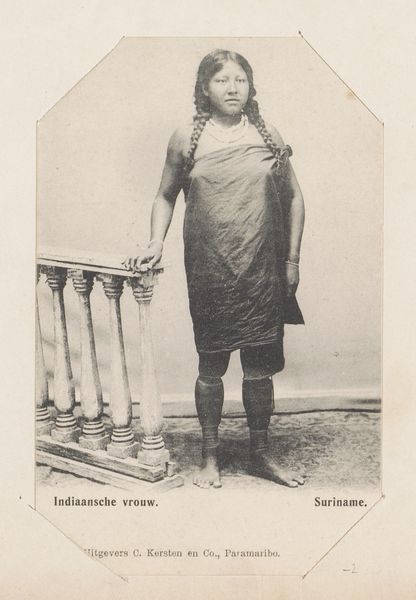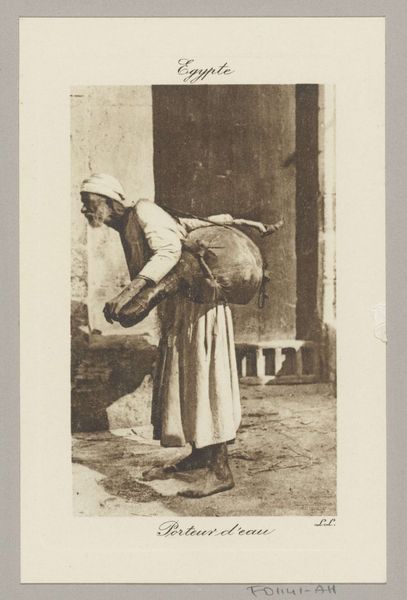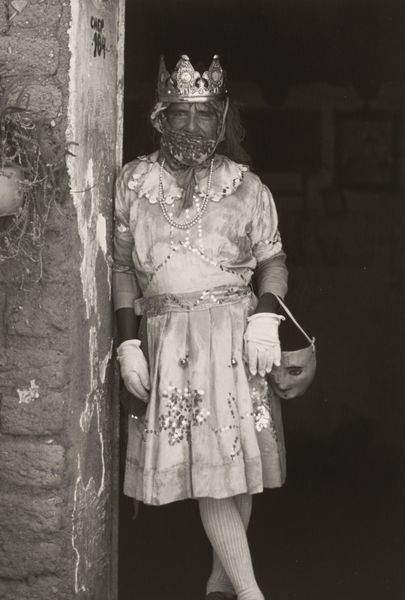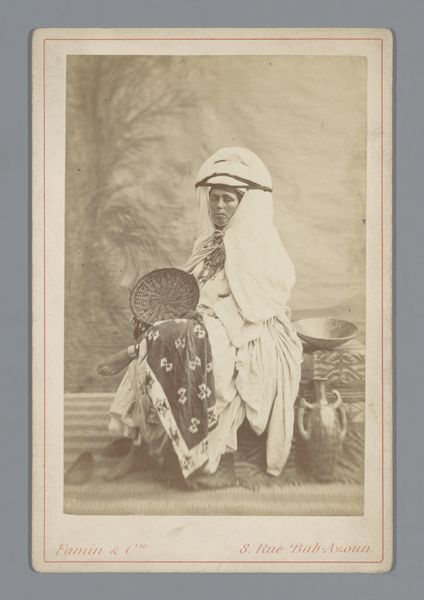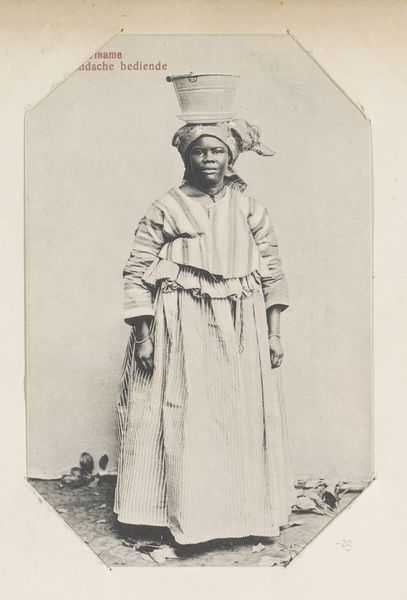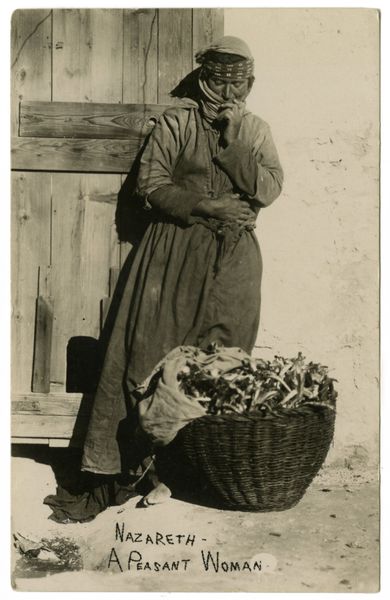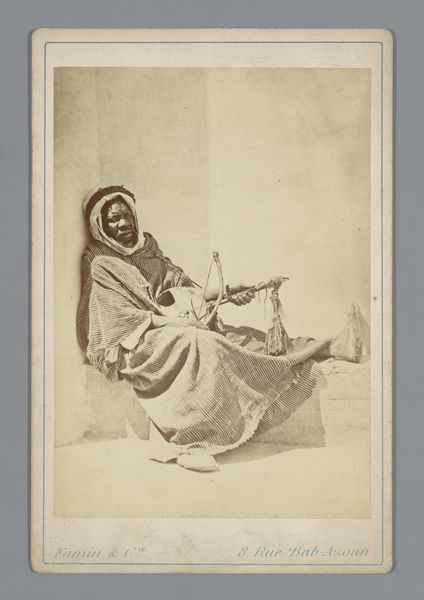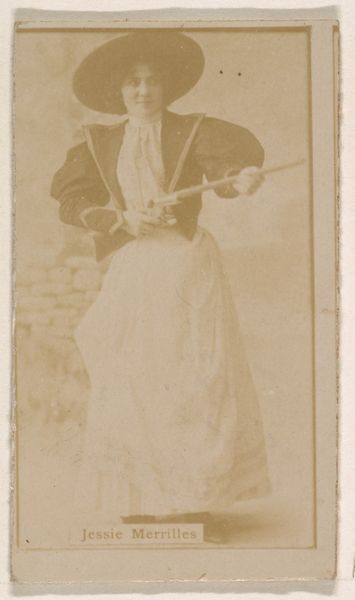
print, photography
#
portrait
#
print photography
#
still-life-photography
# print
#
photography
#
historical photography
#
orientalism
#
portrait photography
Copyright: Karimeh Abbud,Fair Use
Curator: This photograph is titled "Nazareth. A Peasant Girl," by Karimeh Abbud. The medium is listed as both print and photography. Editor: The light! It’s so even, almost…soft. And the girl's gaze, it cuts right through. A touch melancholy, wouldn't you say? But strong too, there’s a kind of serene dignity. Curator: Indeed. There is a palpable strength in her stance, as well. Observe the pot balanced effortlessly on her head. It’s almost like a crown. Beyond its obvious utility, what do you think that object conveys about identity and lived experience in this context? Editor: Well, the pot itself is pretty unassuming, but its symbolic resonance echoes ancient ways of life where balance – both literal and metaphorical – was essential. It evokes themes of daily labour, but also resilience and an intimate relationship with the land. Her simple dress, worn hands…they all speak to that groundedness. Curator: Abbud, working in the early 20th century, consciously adopted a portrait style influenced by orientalism, capturing individuals and communities often rendered invisible by mainstream narratives. The image partakes in visual codes that, despite their undeniable problematic legacy, granted these portraits a sense of… authority. Editor: Authority… but also distance. Doesn't the very act of "capturing" risk exoticizing? There’s this tension isn’t there, between witnessing and… well, voyeurism? We're observing someone else's ordinary life, framed and presented for our consumption. Is there an echo here with religious paintings of the holy mother who stands in wait? Curator: It's a poignant point. And it raises the question of how we, as viewers today, navigate these images with empathy, curiosity, but also with a critical understanding of their historical framework and biases. Editor: Ultimately, it’s about recognising her – this peasant girl of Nazareth – not as a distant “other,” but as a fellow human being who can both carry a heavy weight and return an unshakeable gaze. That is where she transforms from object to active witness, and reminds us that we too bear the weight of our own stories. Curator: I agree entirely. The image serves not merely as an echo from a bygone era but more importantly as a resonant conversation partner today. Thank you.
Comments
No comments
Be the first to comment and join the conversation on the ultimate creative platform.
